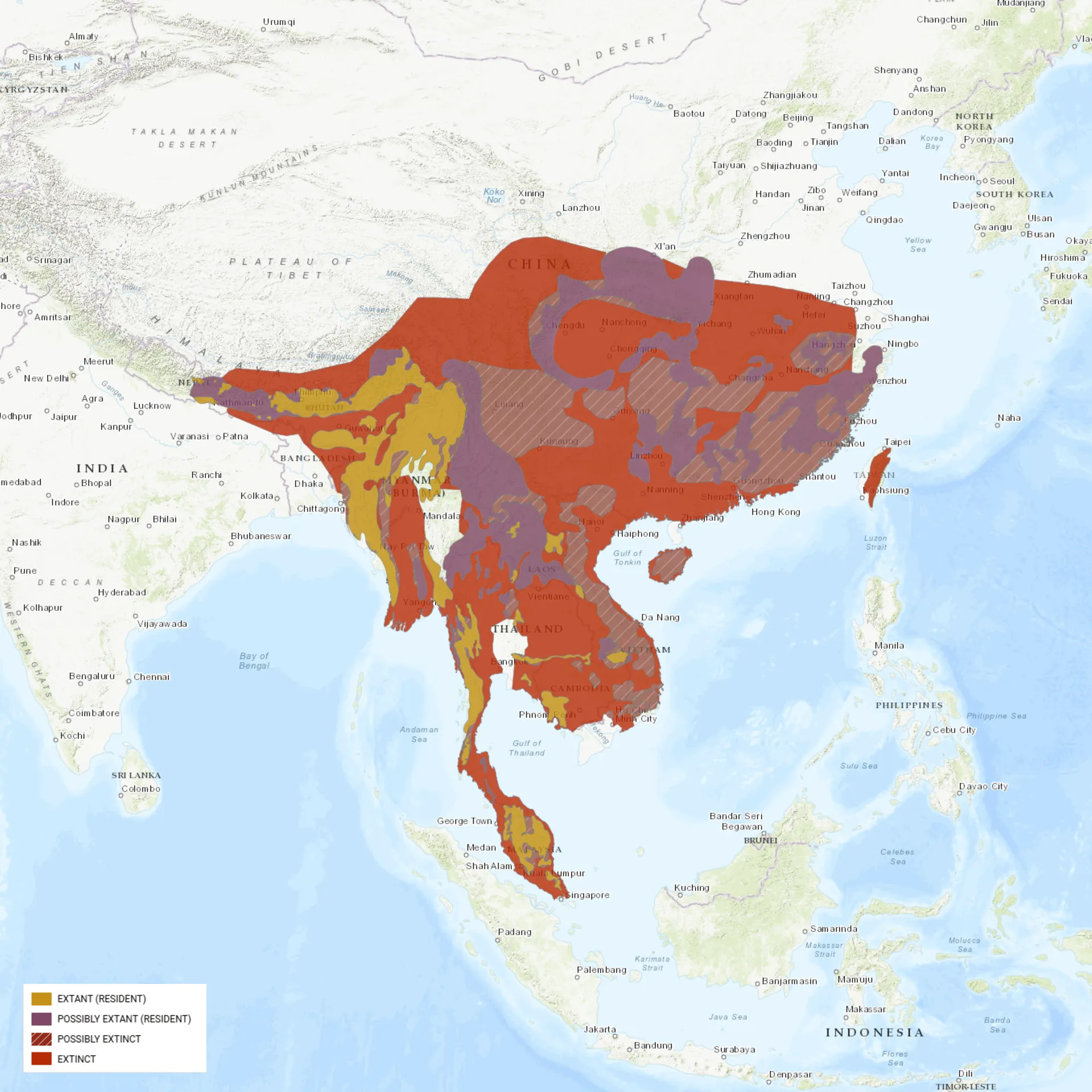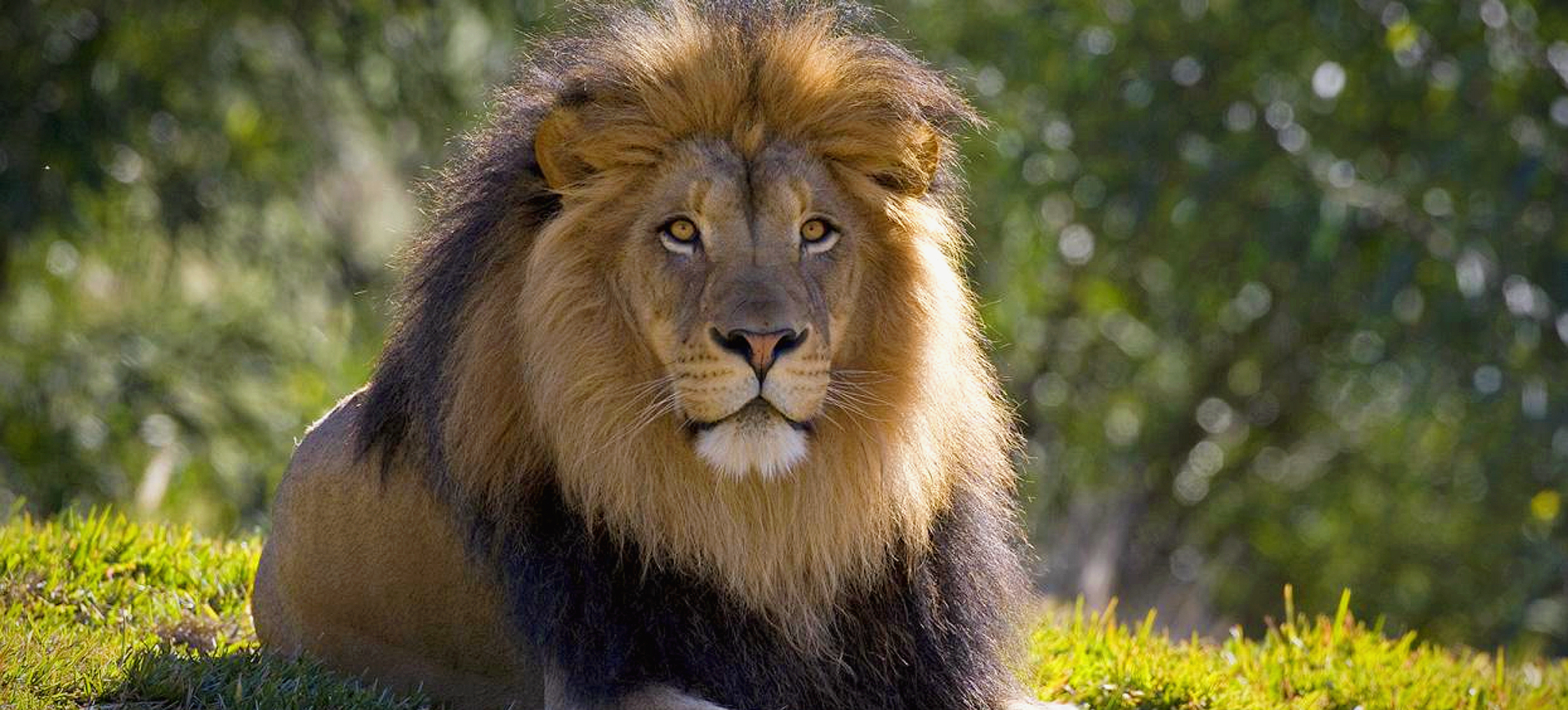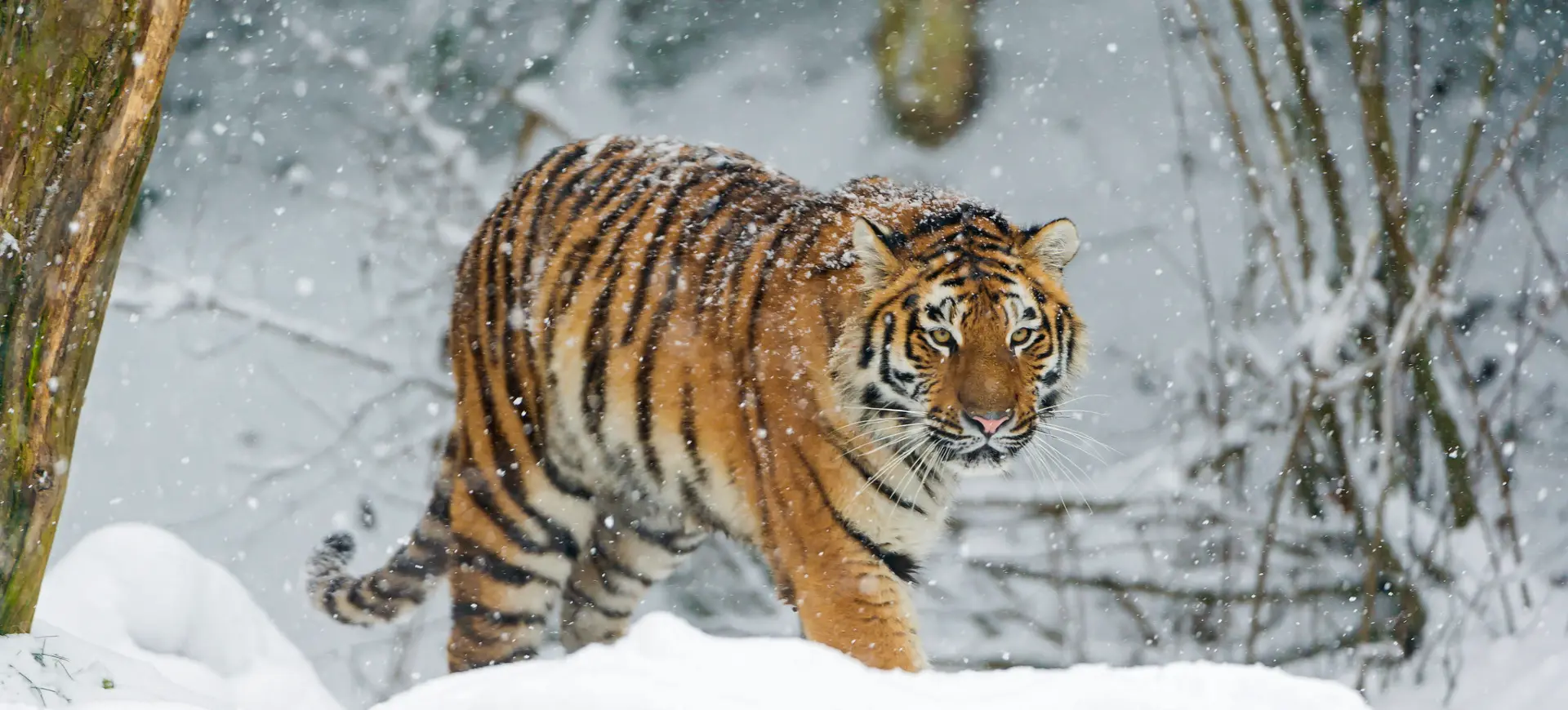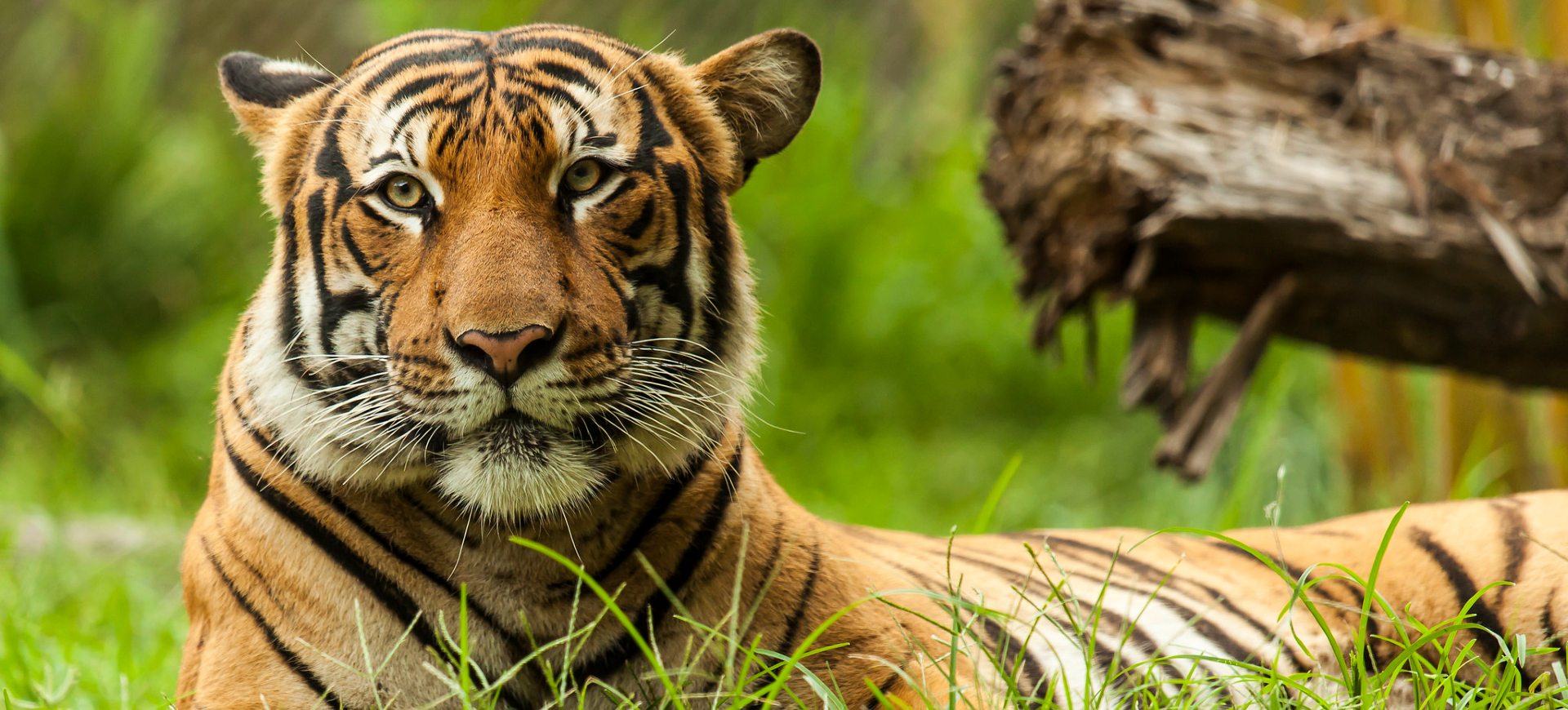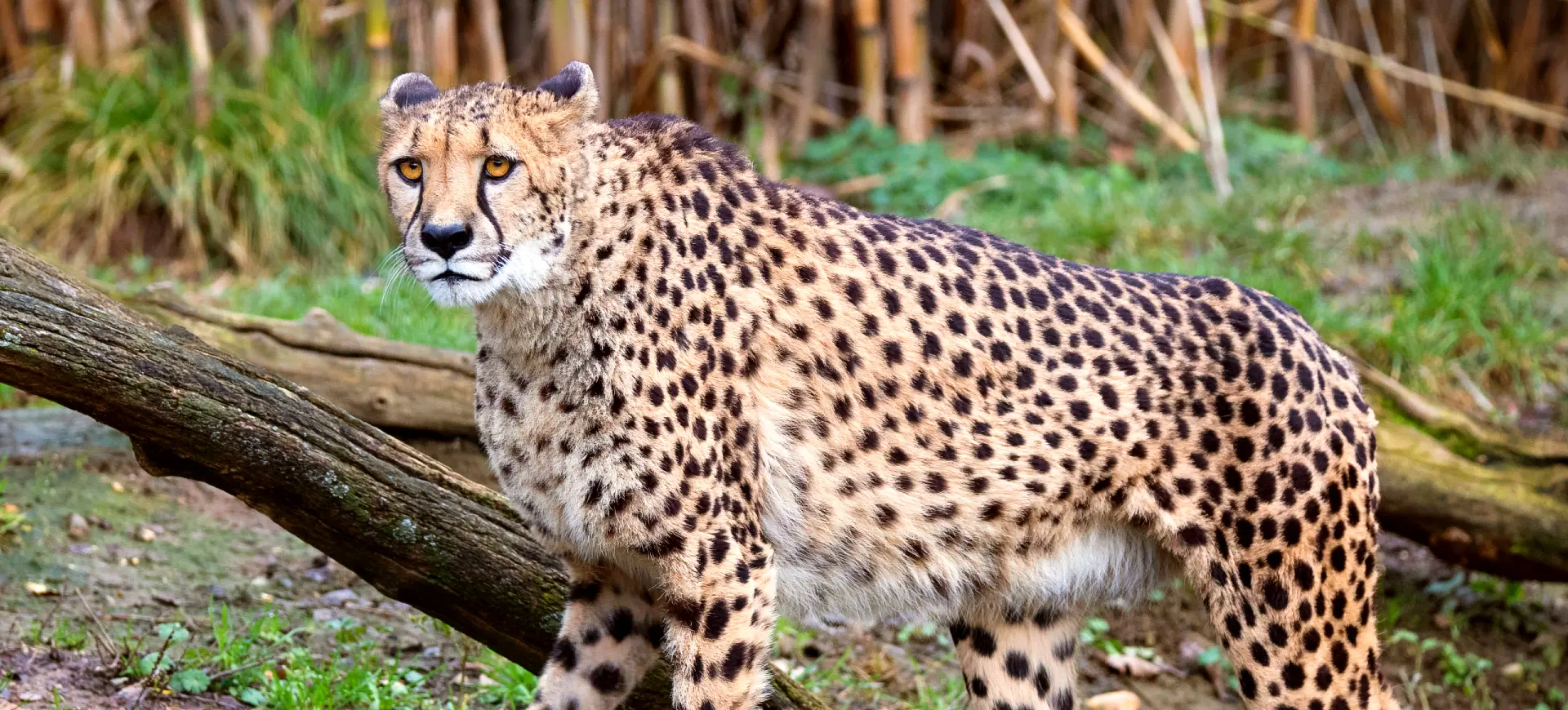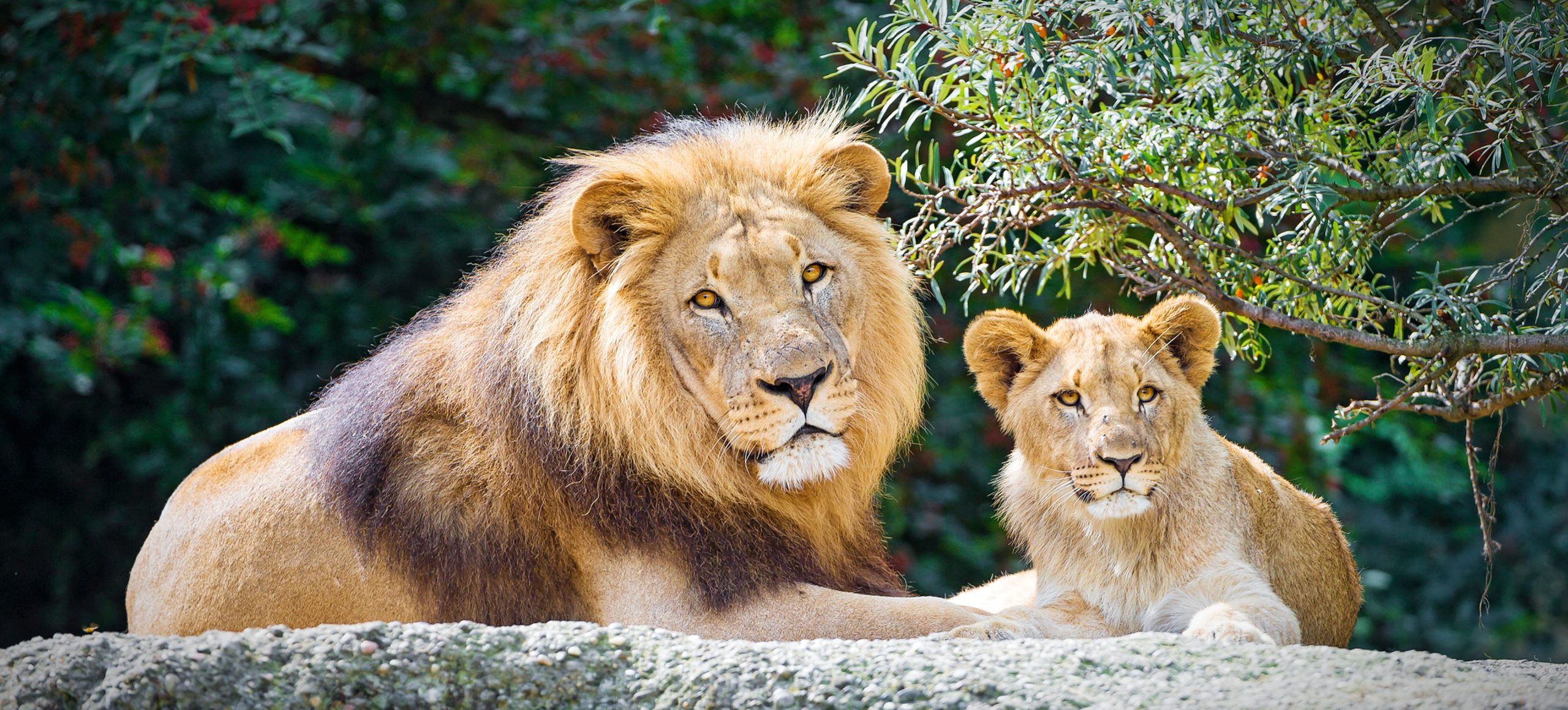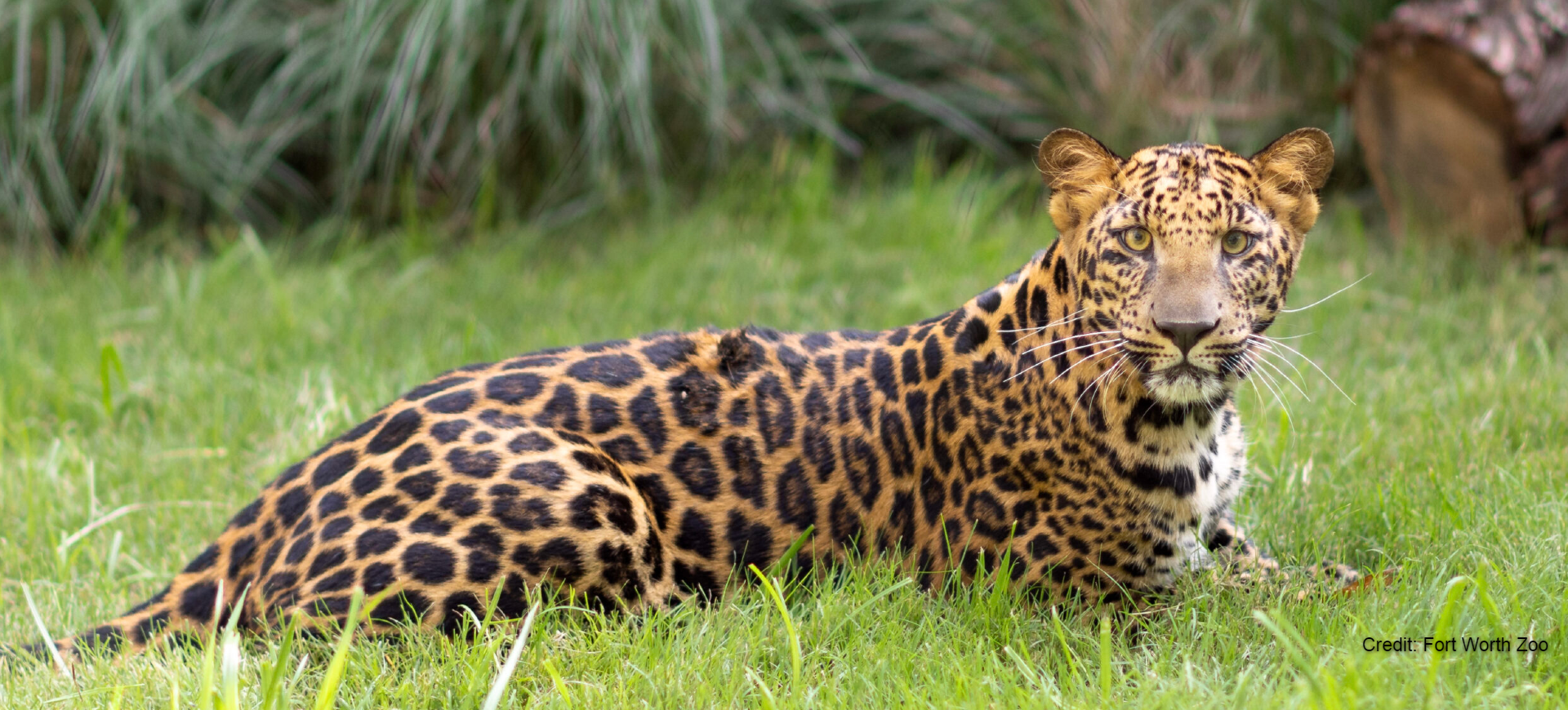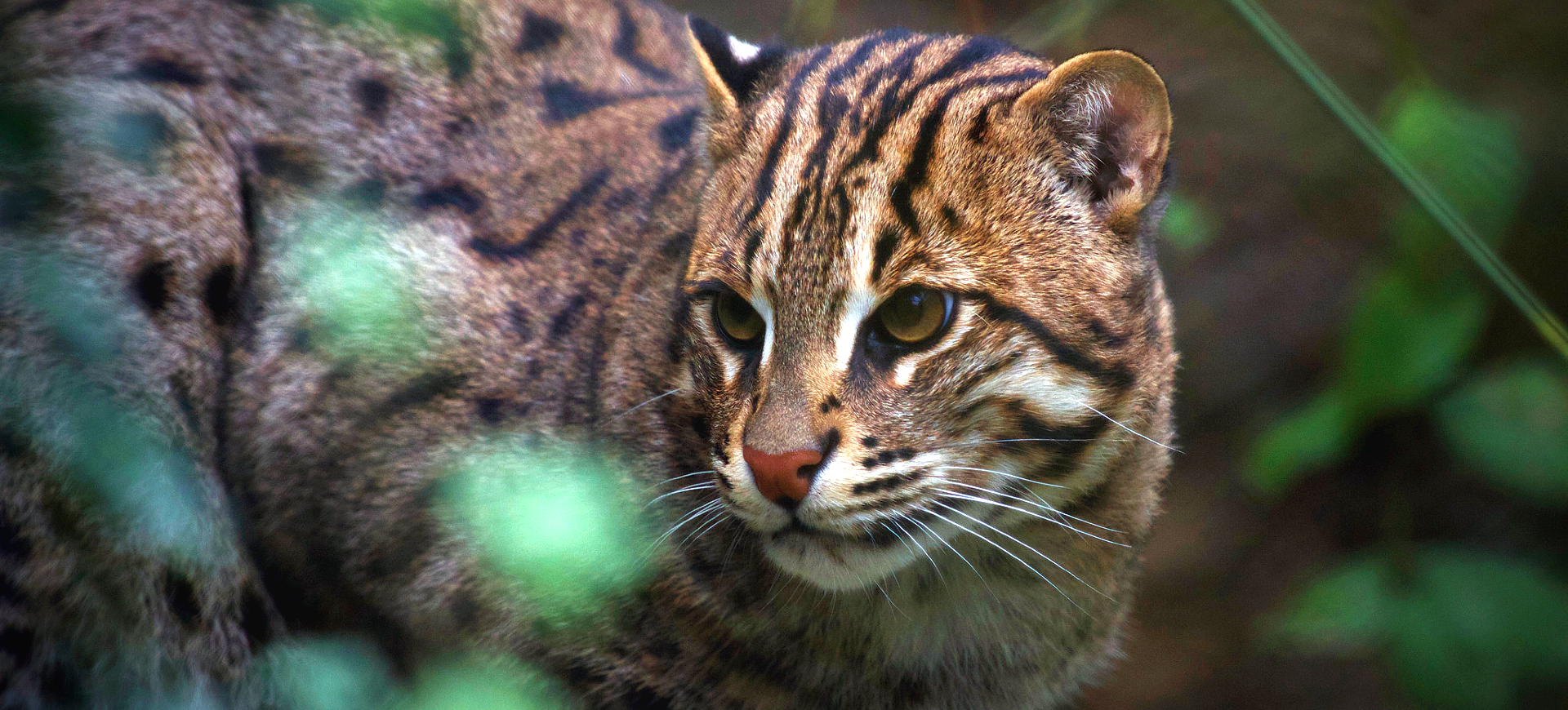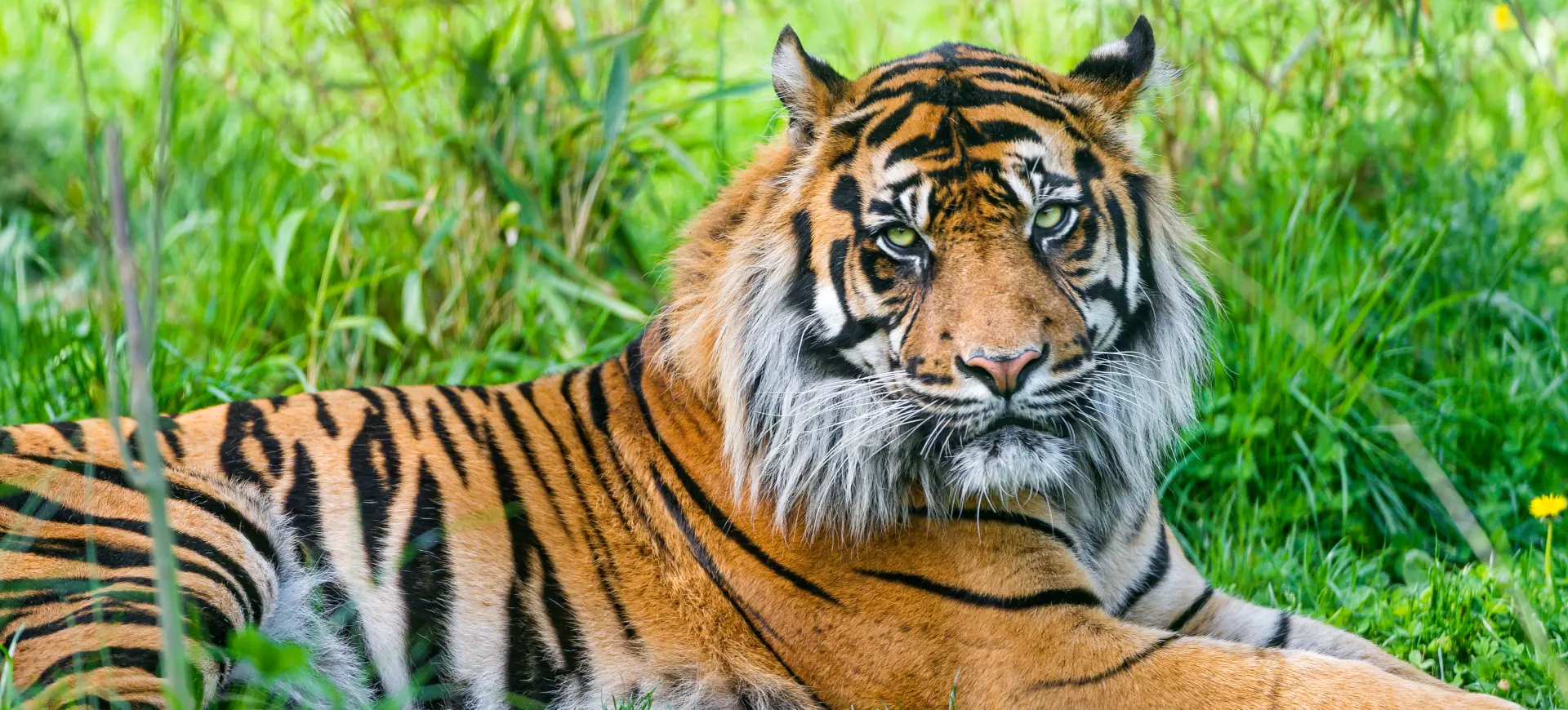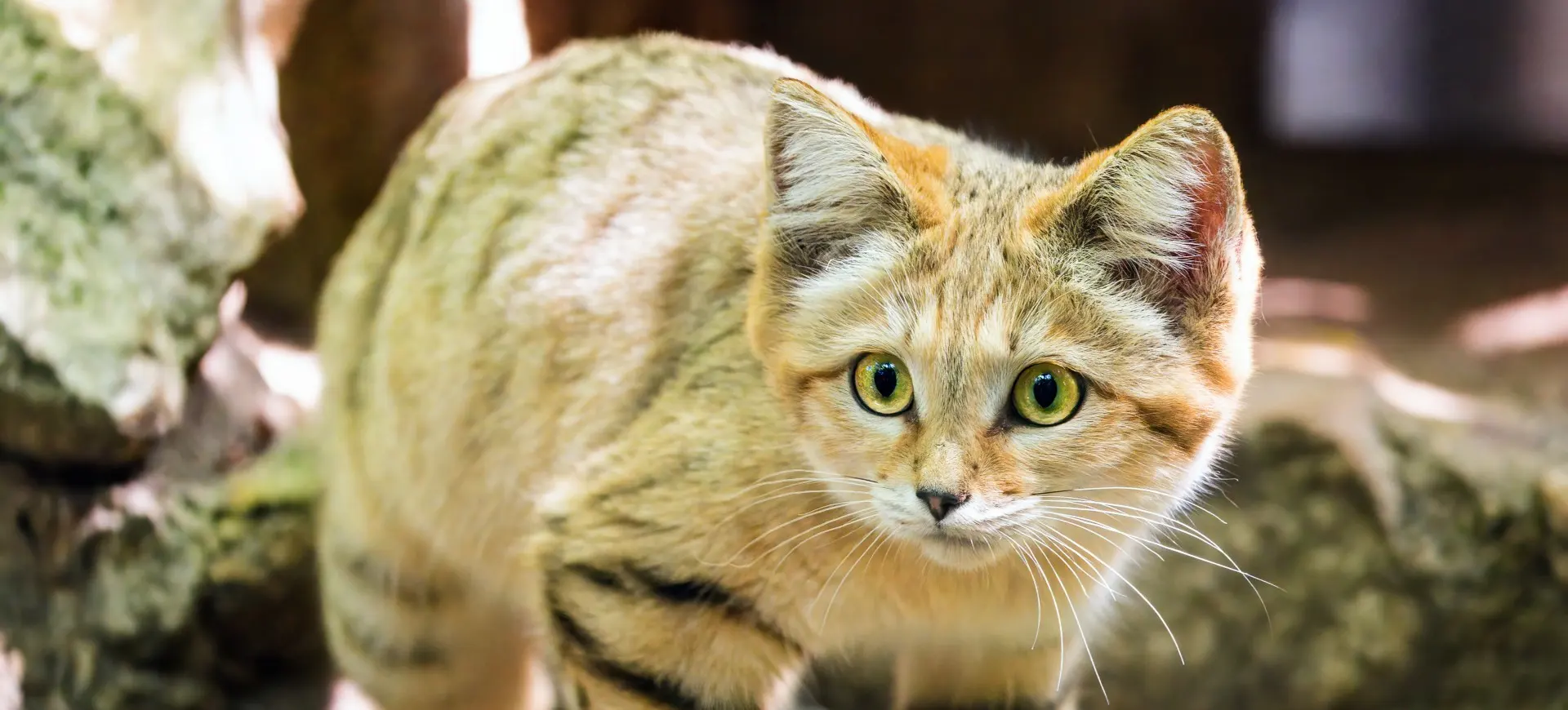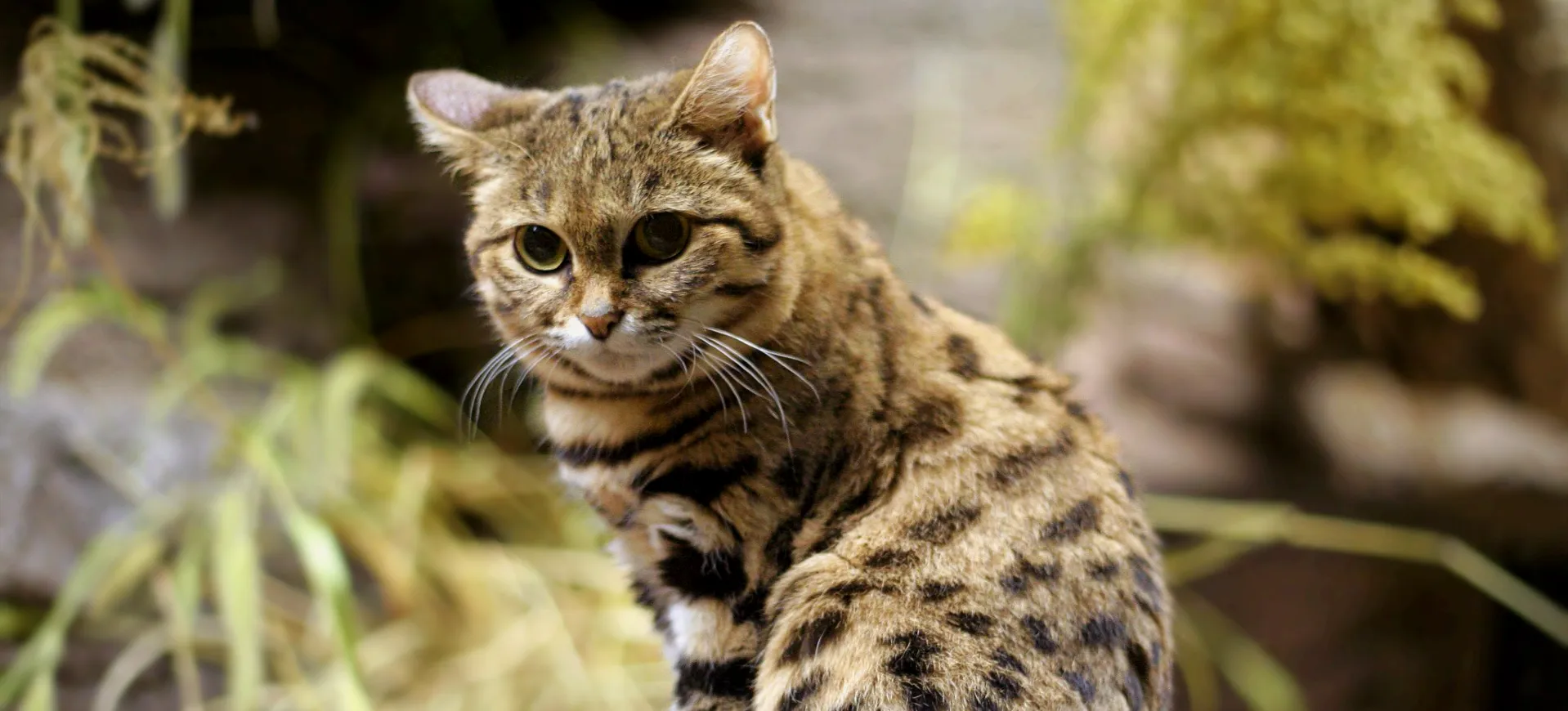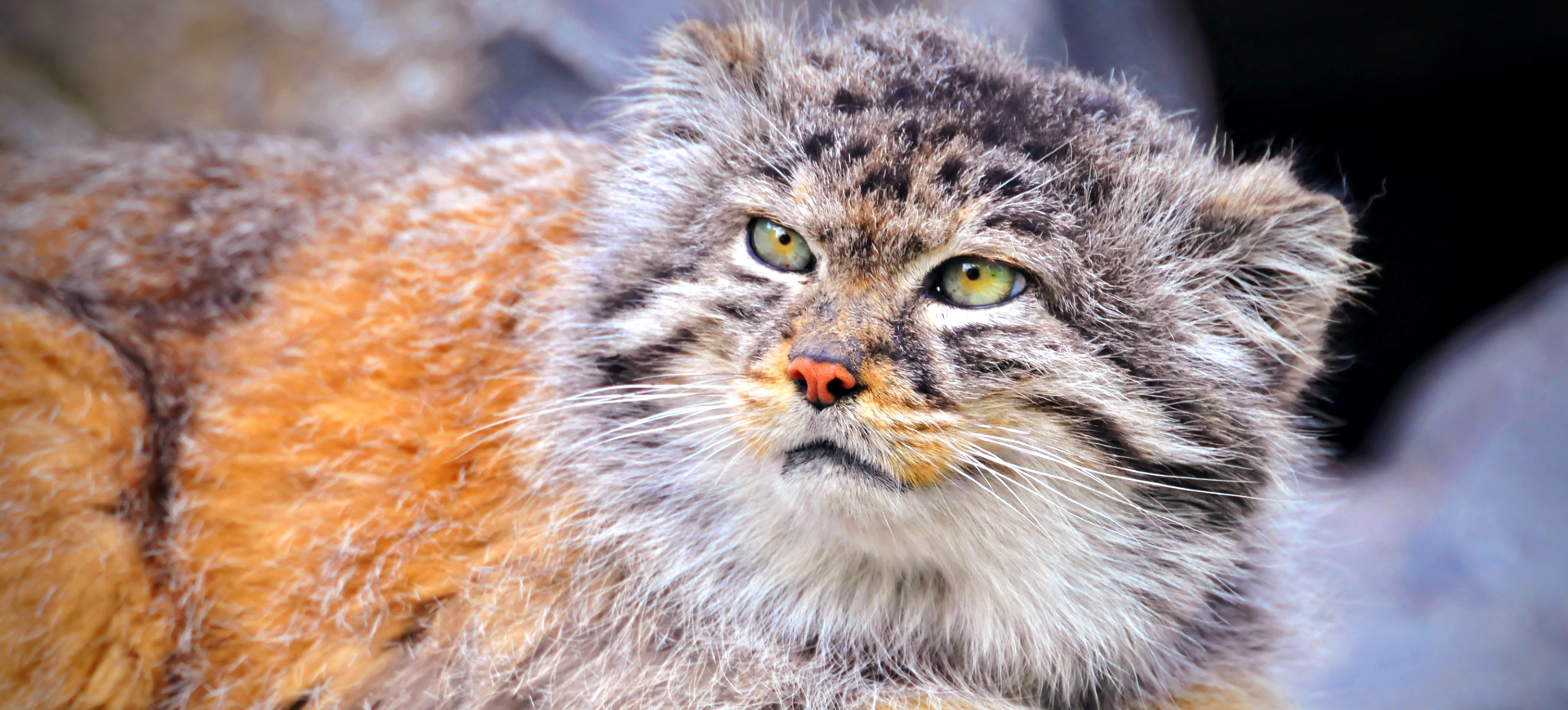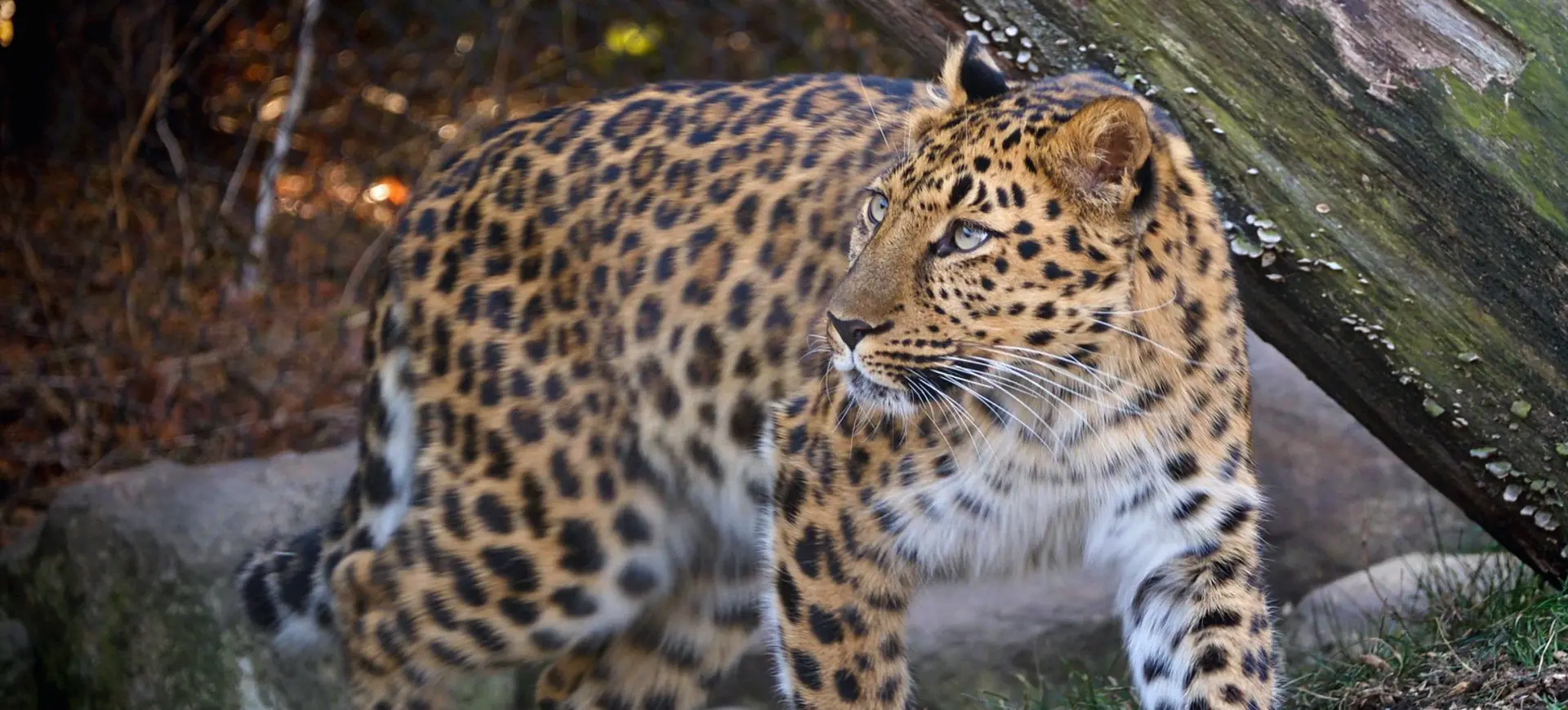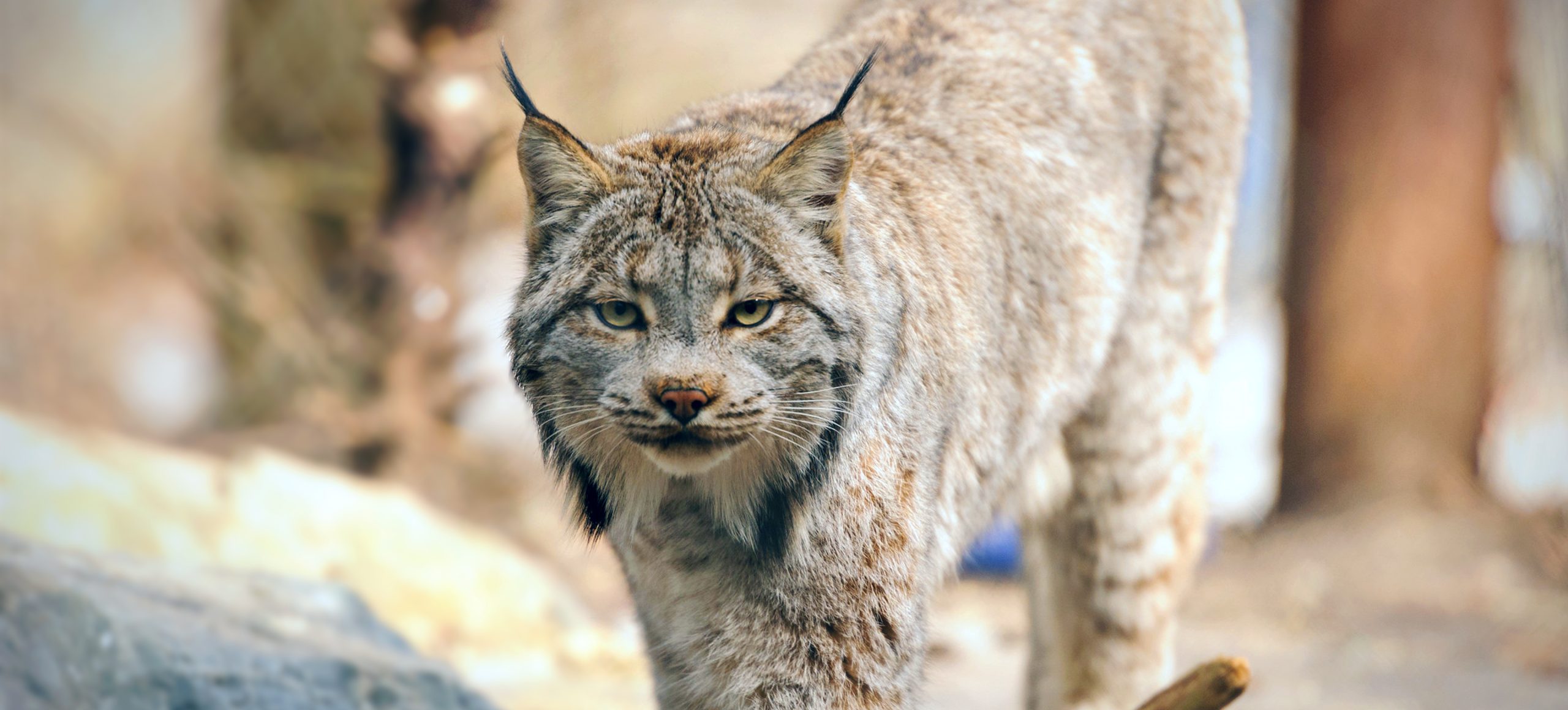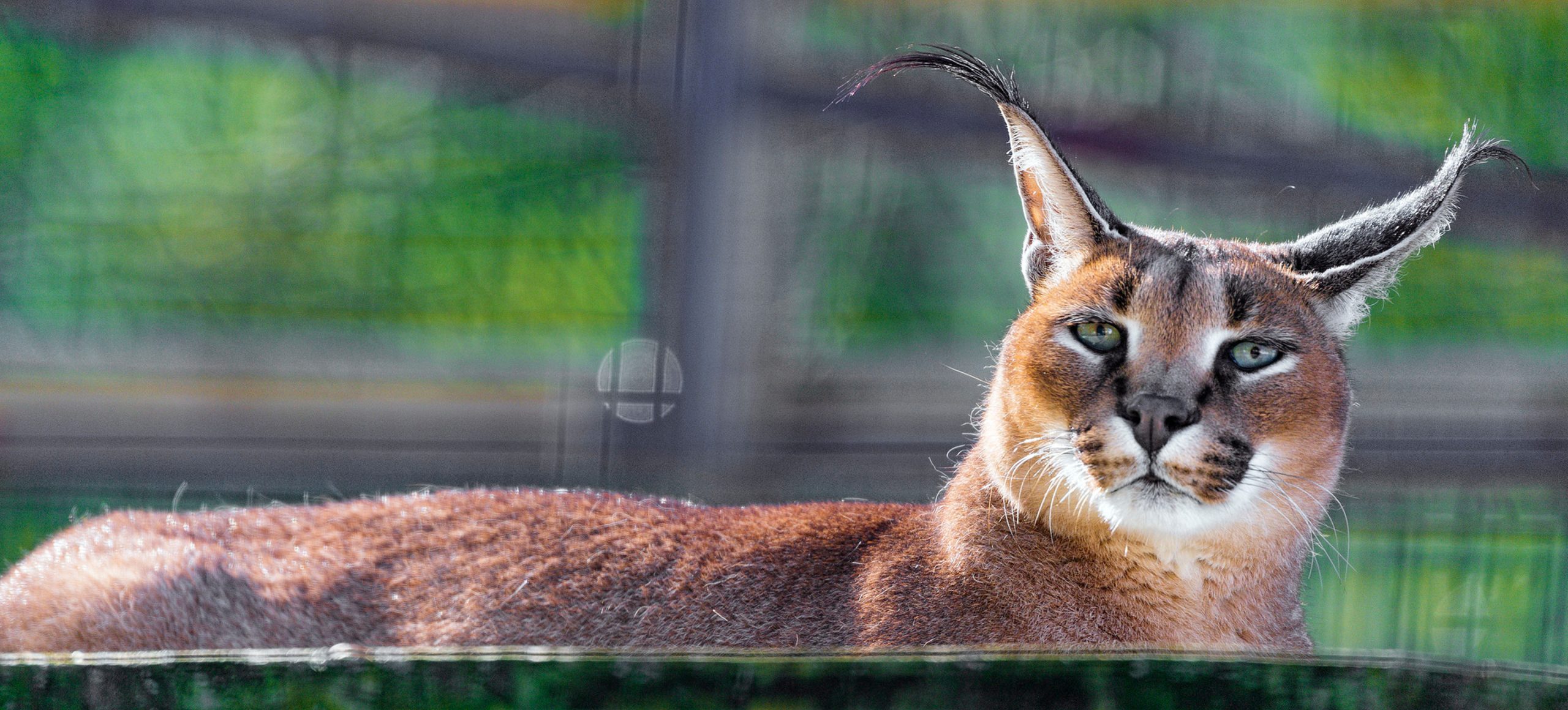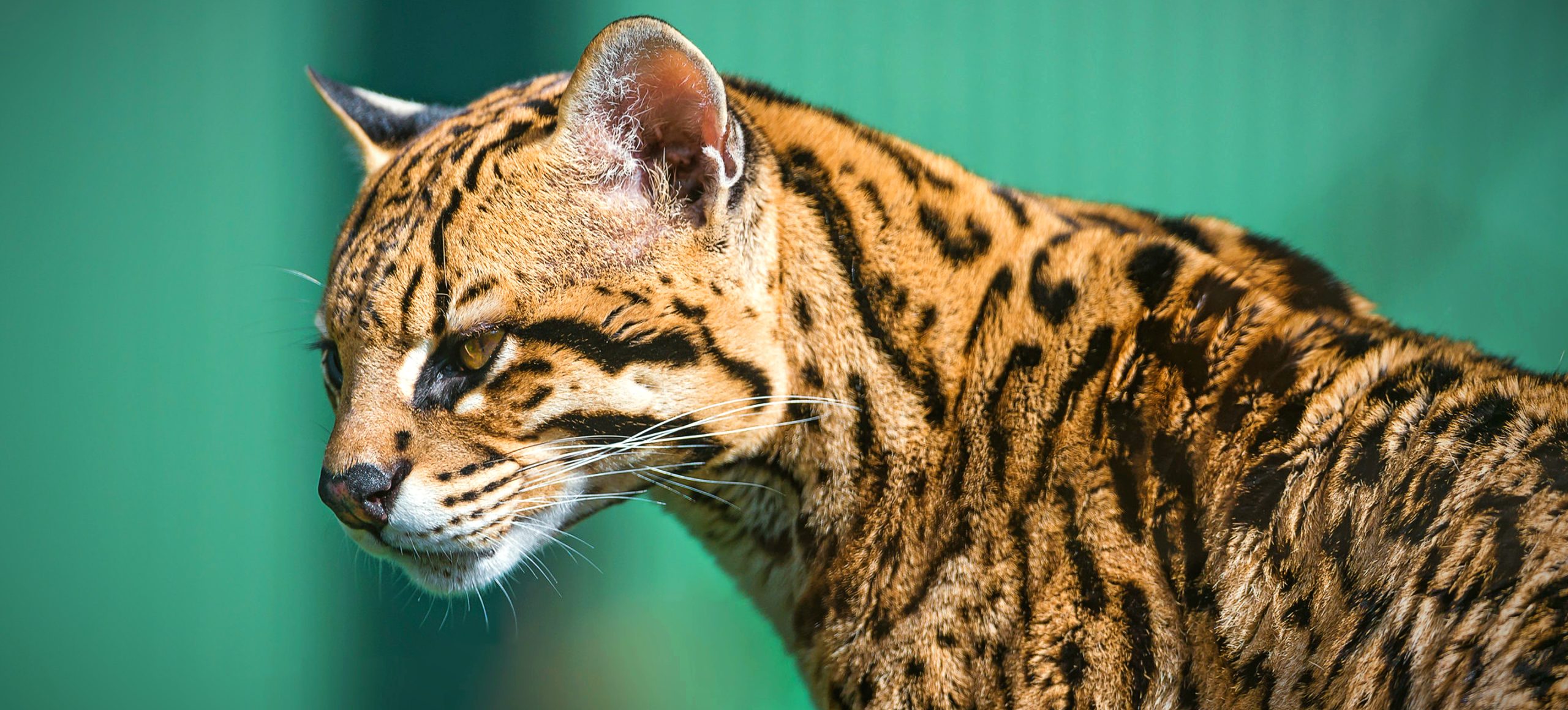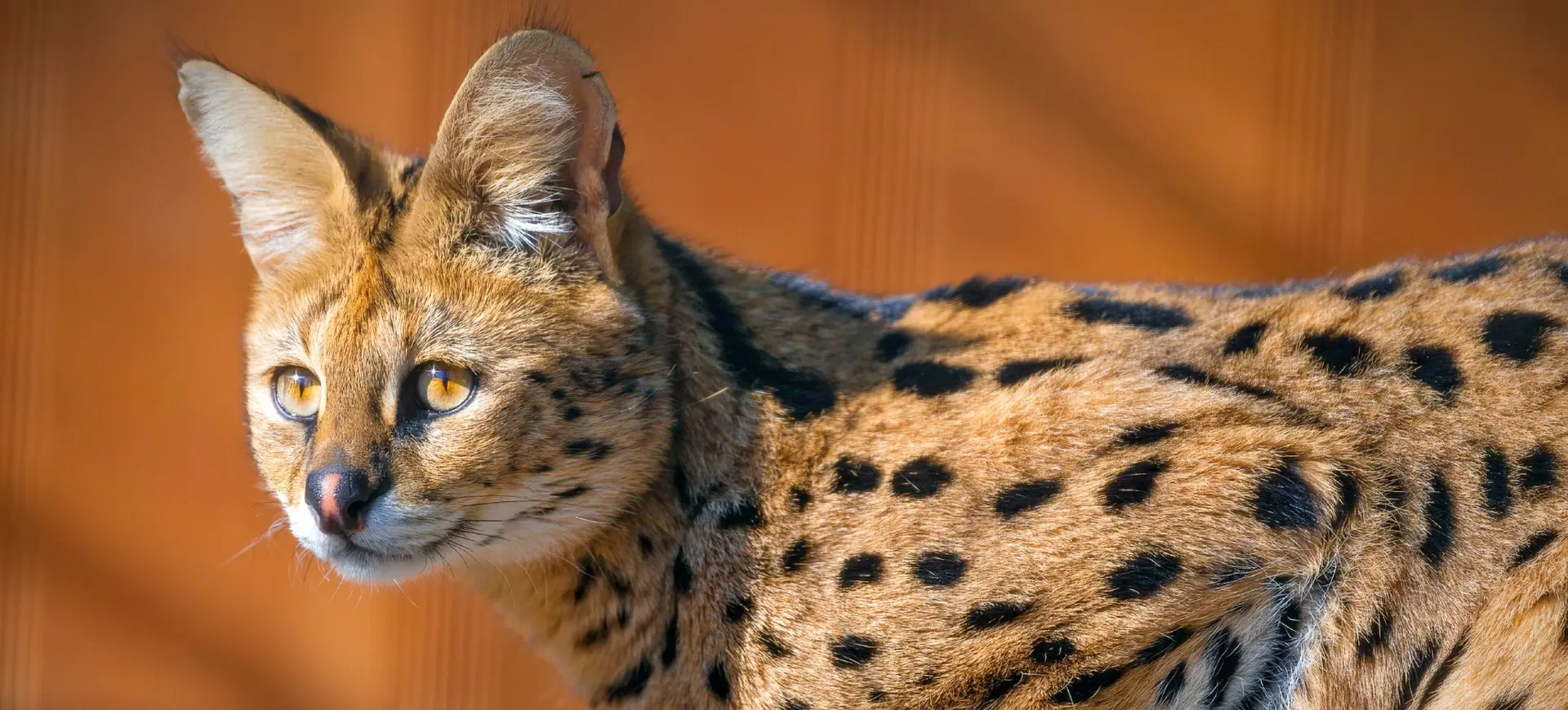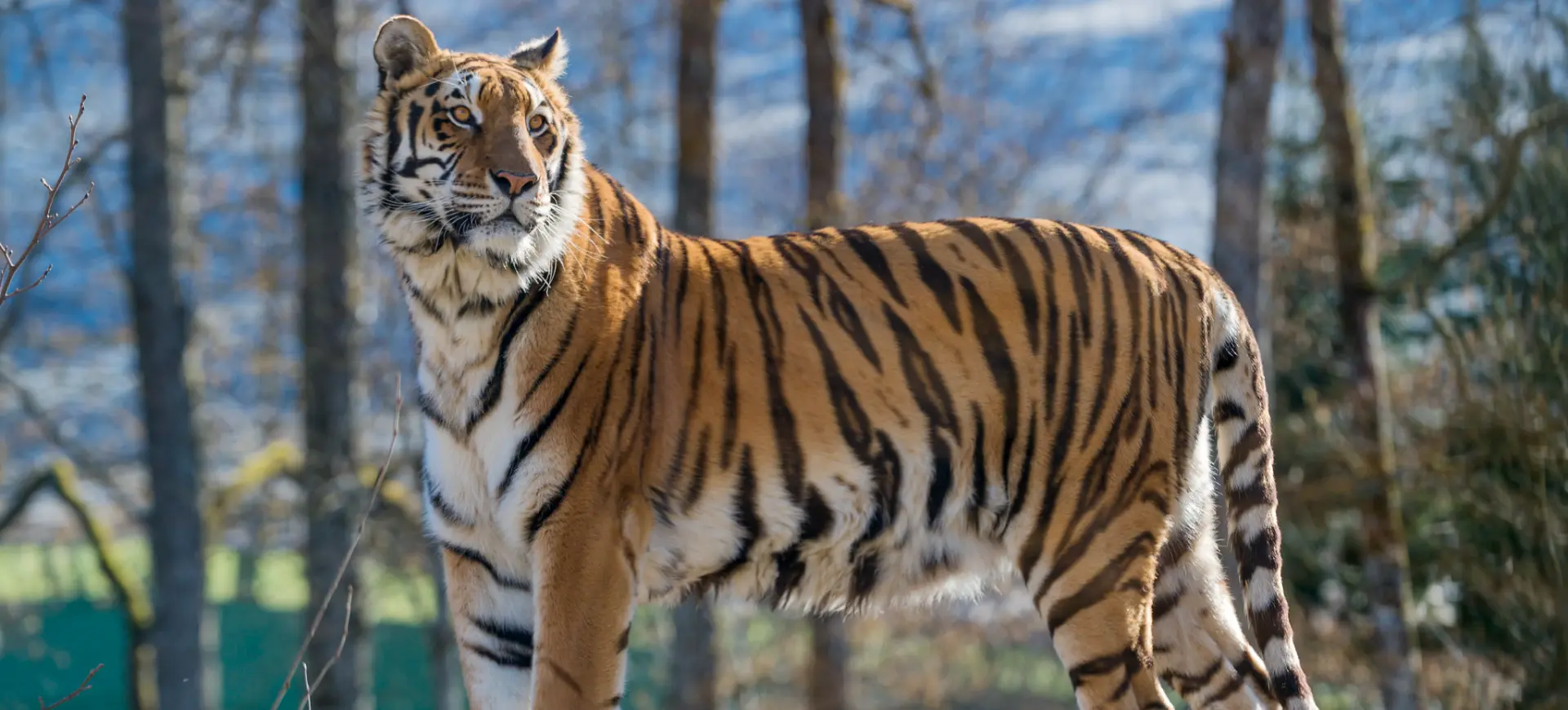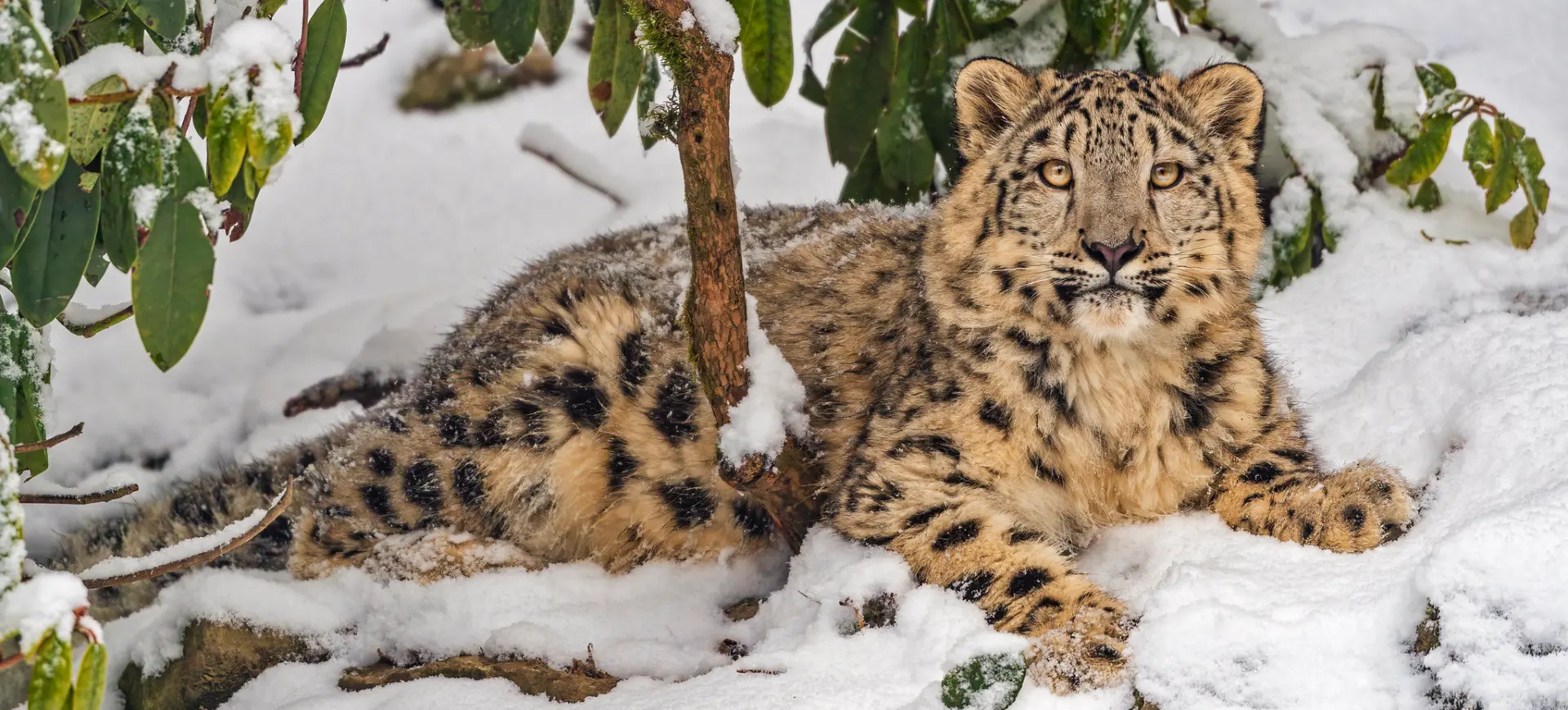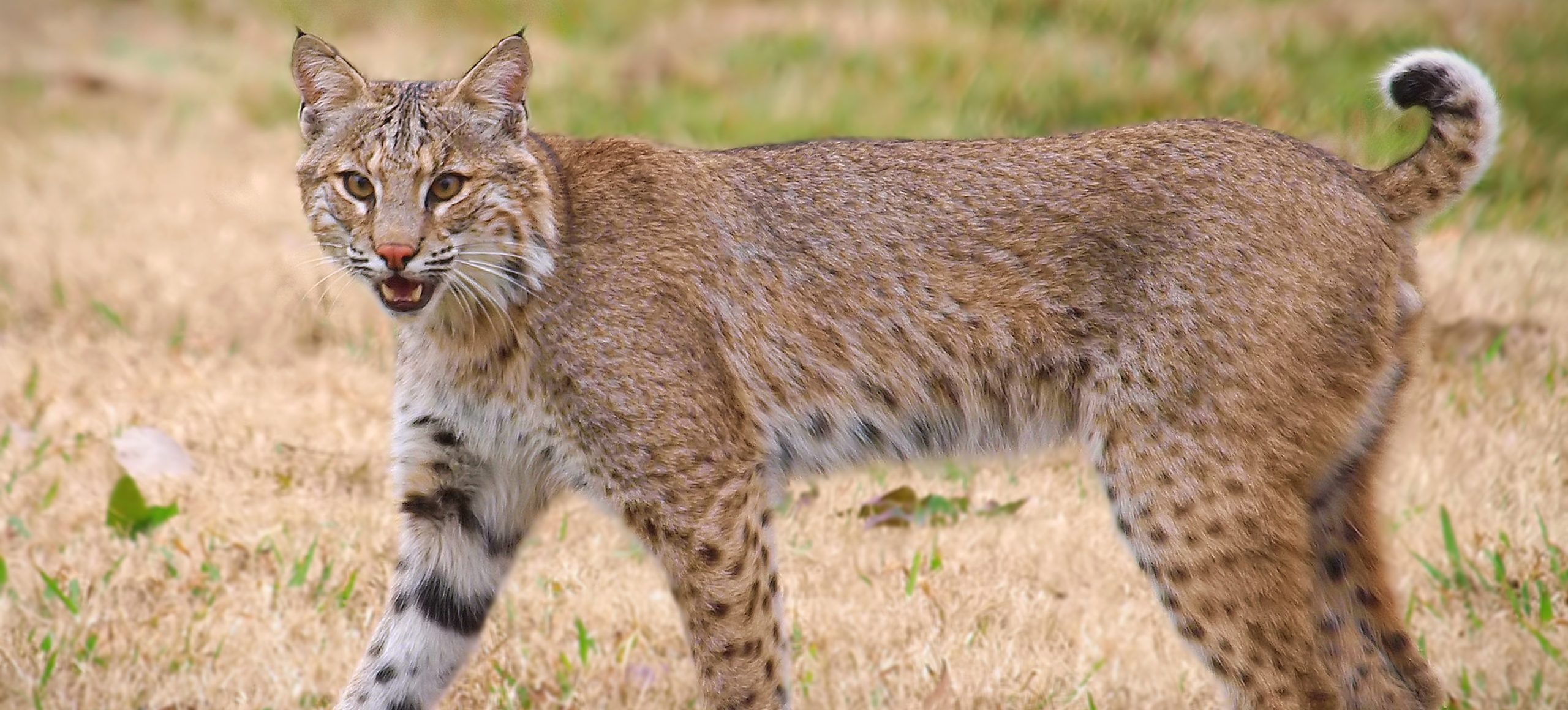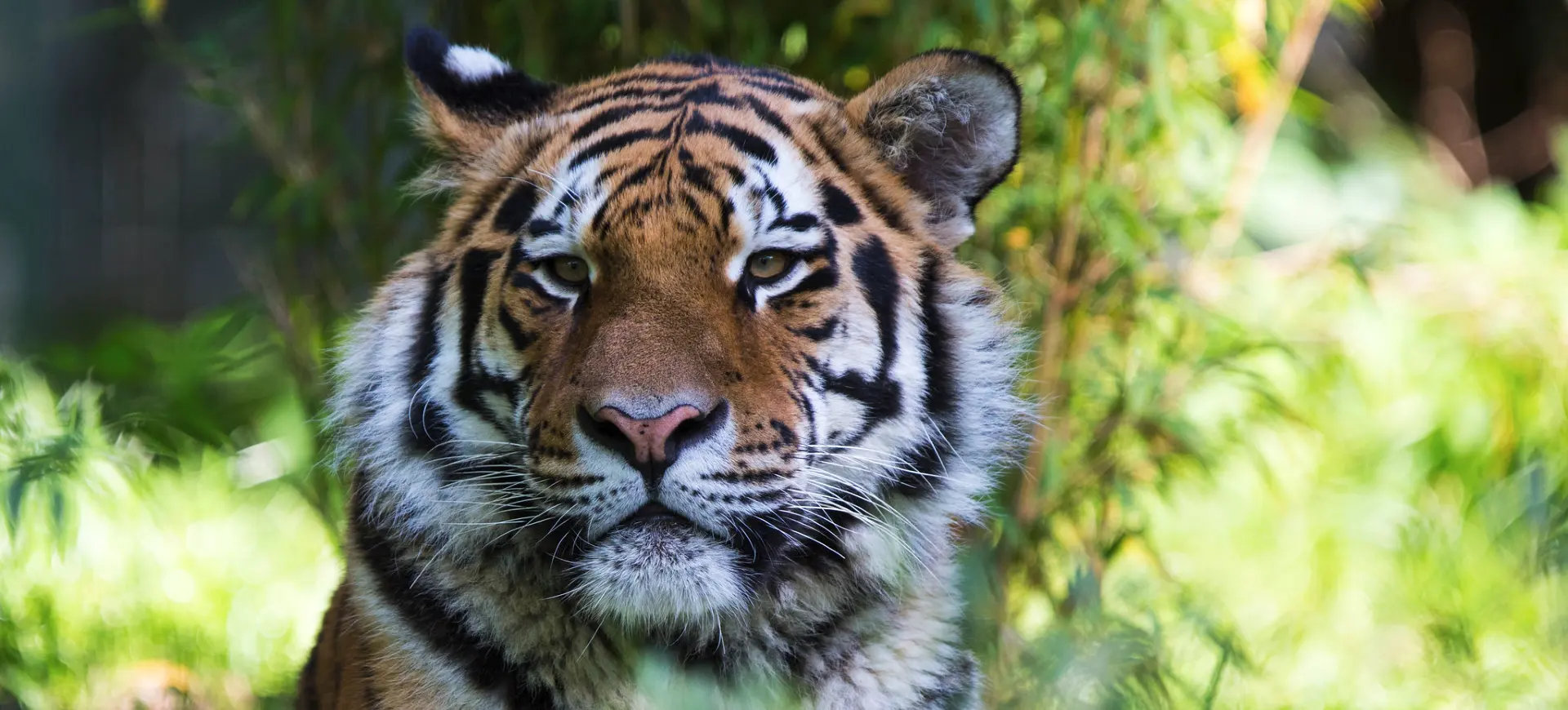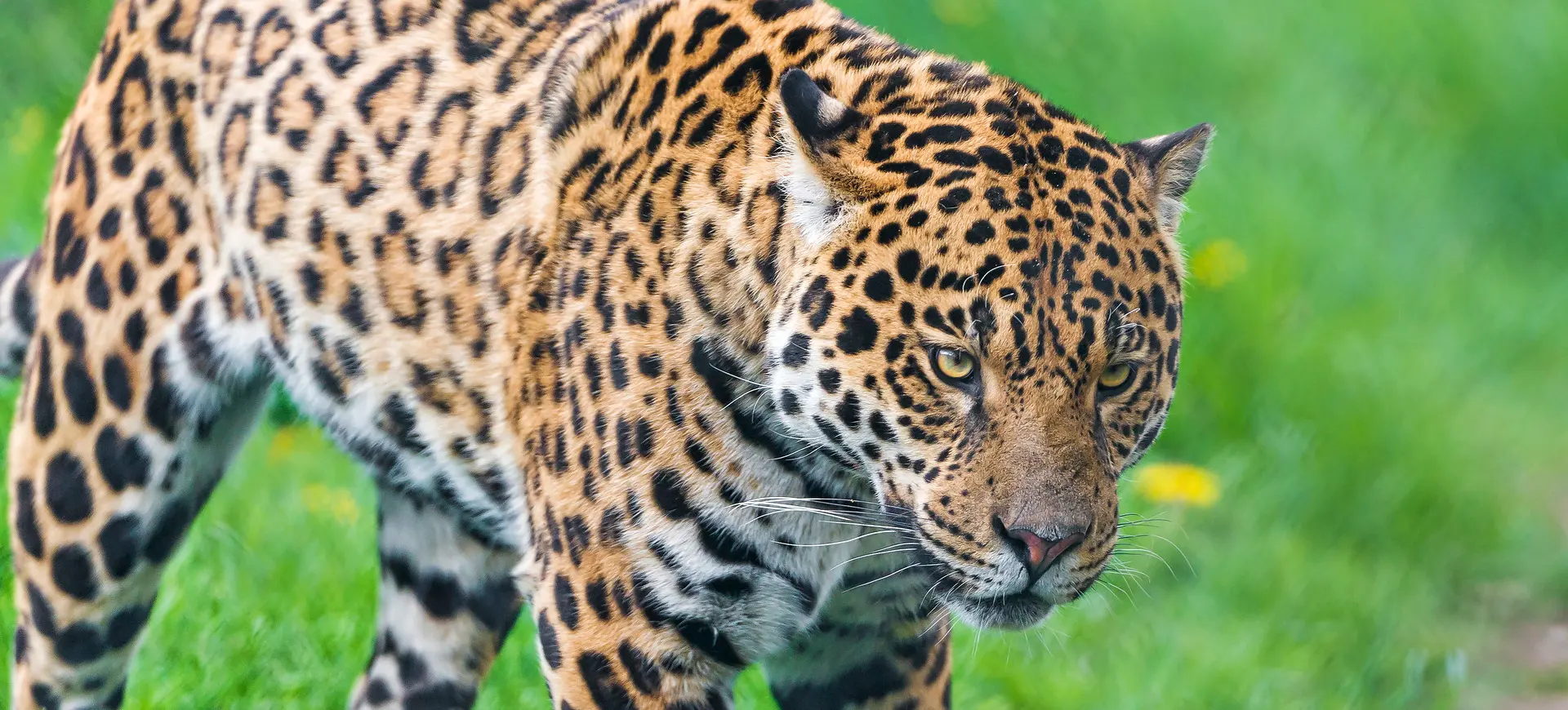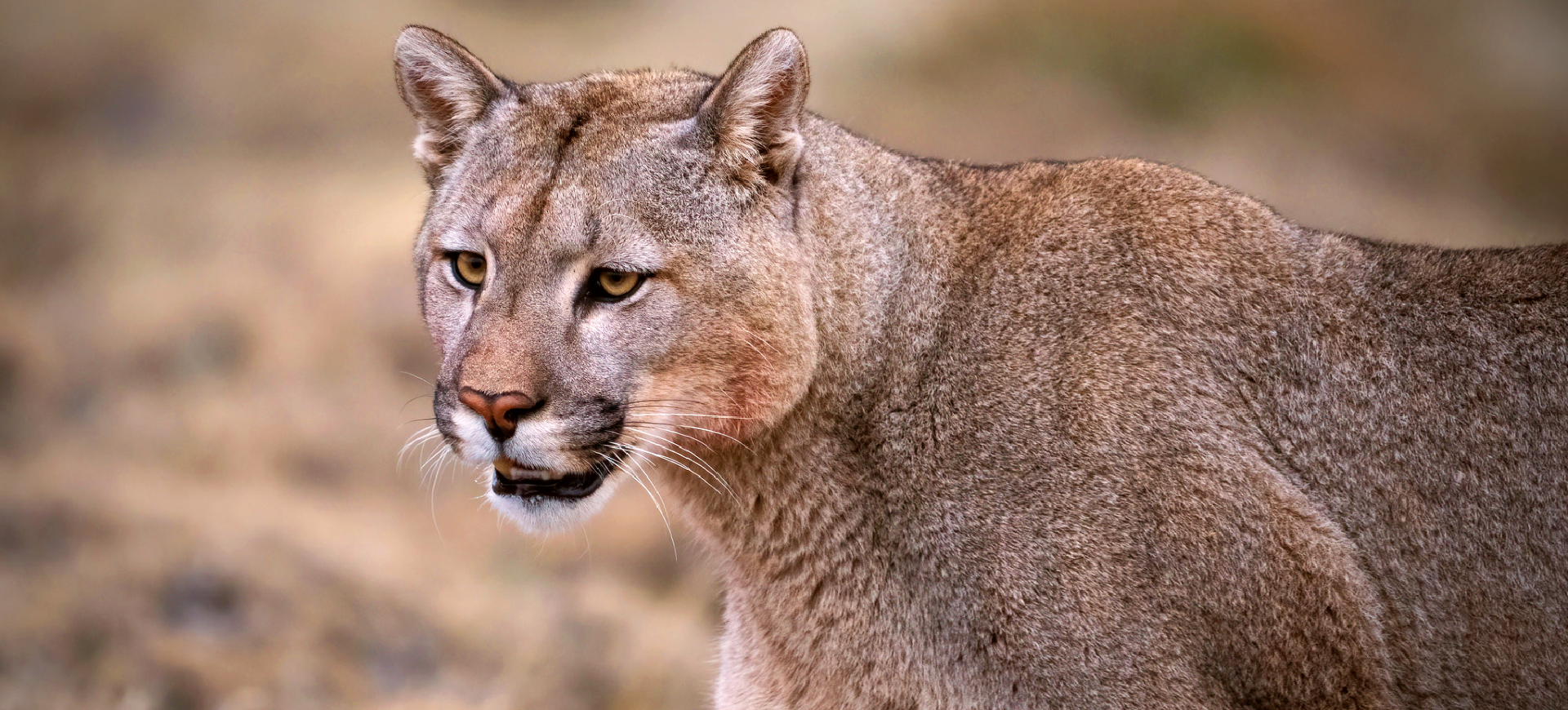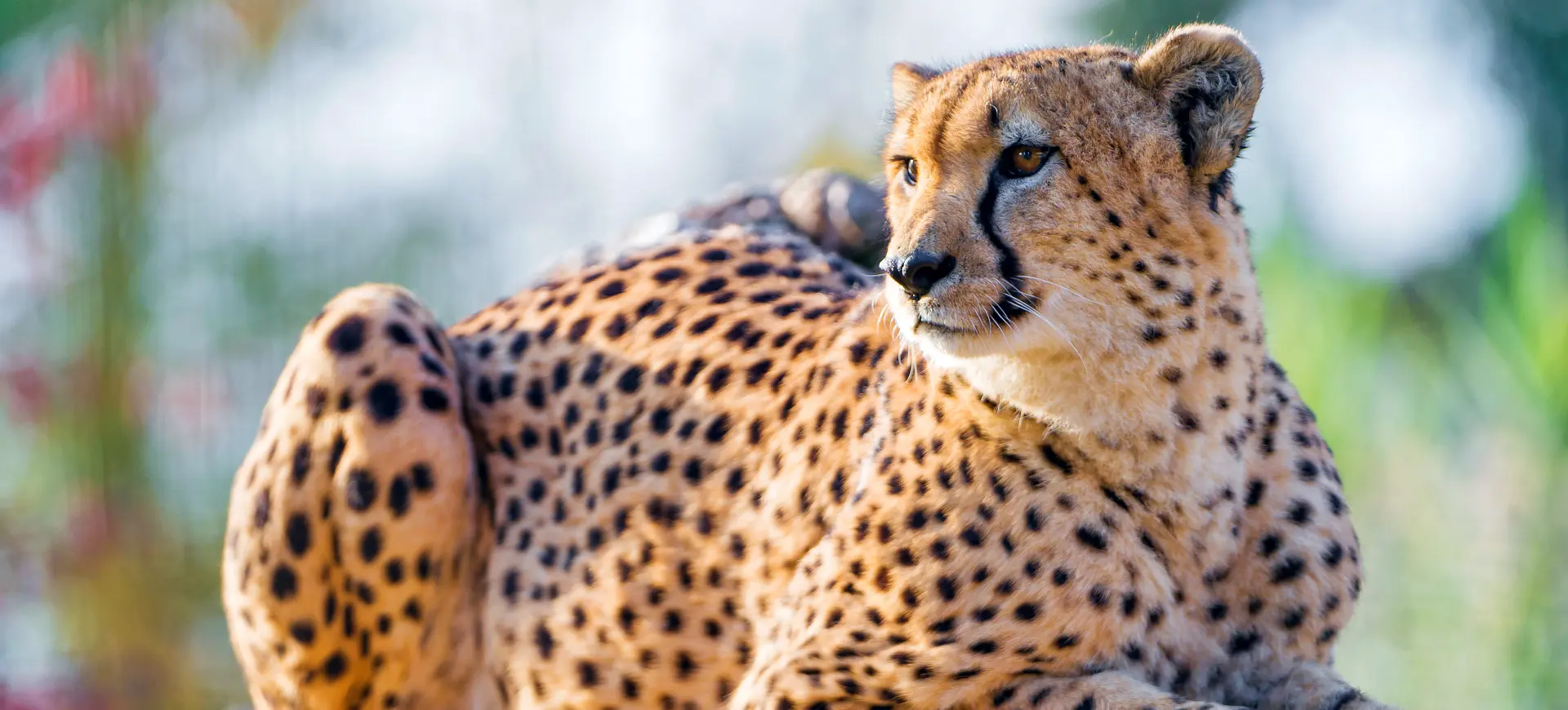Overview
The clouded leopard (Neofelis nebulosa) is a medium-sized wild cat native to Southeast Asian forests, known for its distinctive cloud-like coat patterns. It is an elusive and solitary species, primarily active during dawn and dusk, making it difficult to study in the wild. This arboreal predator is highly adapted for life in the trees, using its long tail for balance and its flexible ankle joints to climb down tree trunks headfirst. Despite its name, the clouded leopard is not closely related to larger leopards but belongs to a separate genus within the Felidae family.
Clouded leopards possess the longest canine teeth relative to the skull size of any wild cat, resembling those of prehistoric saber-toothed cats. Their unique coat features irregular dark-edged blotches on a yellowish-gray background, providing excellent camouflage in dense forests. Their limbs are short but powerful, aiding in agility while navigating trees and leaping between branches. Although excellent climbers, they also hunt on the ground, ambushing prey with sudden bursts of speed.
These cats have a wide but fragmented range across Nepal, India, China, Myanmar, and Southeast Asia forests. Habitat loss due to deforestation, poaching for their pelts and bones, and illegal pet trade are major threats to their survival. Conservation programs focus on habitat protection, anti-poaching measures, and captive breeding programs to prevent further population declines. Due to their secretive nature and dense forest habitats, population estimates remain uncertain, but the species is considered vulnerable to extinction.
Current distribution:
Clouded leopards have a fragmented distribution across South and Southeast Asia, including parts of Nepal, India, Bhutan, China, Myanmar, Thailand, Malaysia, and Indonesia. They are particularly concentrated in the forests of the Himalayan foothills, the Indo-Malayan region, and Borneo, where they share habitats with other big cats such as tigers and leopards. The species' elusive nature and dense habitat make it difficult to assess population numbers accurately. Camera trap studies and genetic research indicate that some populations are isolated due to deforestation and human expansion.
Some regions have been locally extirpated due to habitat destruction and poaching. The clouded leopard's range overlaps with areas of rapid deforestation, making it highly susceptible to human-induced habitat fragmentation. Conservation efforts are underway in national parks and protected areas, including Khao Yai National Park in Thailand and Namdapha National Park in India. Research and conservation programs focus on habitat preservation, anti-poaching laws, and captive breeding to prevent further declines.
Physical Description:
Clouded leopards are medium-sized cats with a stocky build, short legs, and an exceptionally long tail that can be nearly as long as their body. Their fur is covered in large, irregularly shaped dark markings with a mix of spots and stripes, resembling clouds, which provide excellent camouflage in dense foliage. Their large, forward-facing eyes give them strong depth perception, aiding their nocturnal and crepuscular hunting habits. Their ears are small and rounded, positioned for detecting prey movements in dense forest environments.
One of the most distinctive features of the clouded leopard is its elongated canine teeth, which can grow up to 2 inches (5 cm) long, proportionally the longest of any living wild cat. Their powerful limbs and large paws, equipped with sharp retractable claws, allow them to climb trees with exceptional agility. Their ankle joints are highly flexible, enabling them to descend headfirst from trees, a rare ability among wild cats. Despite their relatively small size, they are strong predators capable of taking down prey larger than themselves.

Lifespan: Wild: ~11 Years || Captivity: ~17 Years

Weight: Male: 30–50 lbs (14–23 kg) || Female: 25–44 lbs (11–20 kg)

Length: Male: 27–41 in (69–104 cm) || Female: 25–39 in (64–99 cm)

Height: Male: 18–22 in (46–56 cm) || Female: 16–20 in (41–51 cm)

Top Speed: 40 mph (64 km/h)
Characteristic:
Native Habitat:
Clouded leopards inhabit tropical and subtropical forests, including lowland rainforests, montane forests, and mangrove swamps. They are most commonly found in dense, tree-covered environments, where their exceptional climbing skills provide shelter and hunting advantages. These cats prefer remote, undisturbed areas with thick vegetation, allowing them to remain hidden from larger predators and human activity. Unlike some other big cats, their arboreal nature makes them less dependent on open grasslands.
They are found at varying elevations, from sea level up to 9,800 feet (3,000 meters), with some populations recorded in the Himalayan foothills. Seasonal changes may influence their movements, as they may venture into lower elevations during colder months in mountainous regions. The availability of prey and tree cover strongly influences their habitat selection, making deforestation a major threat. In some areas, they have been documented using secondary forests, but primary rainforests remain their most important habitat.
Biomes:
Biogeographical Realms:
Continents:
Diet:
Diet & Feeding Habits:
Clouded leopards are carnivorous and primarily hunt small to medium-sized mammals such as deer, wild boars, primates, and rodents. Their powerful jaws and long canine teeth allow them to deliver precise, lethal bites to the neck of their prey. They are ambush predators, relying on stealth and patience before launching a sudden, powerful attack. In addition to mammals, they may consume birds, reptiles, and even domestic livestock in areas where their natural prey is scarce.
These cats are both arboreal and terrestrial hunters, capable of stalking prey in the trees or forest floor. Their ability to climb and maneuver through dense canopies gives them access to prey that other large cats cannot reach. Their strong jaw muscles enable them to carry prey up into the trees to avoid scavengers and competitors. As solitary hunters, they consume their kills alone, often dragging carcasses to secluded spots to eat undisturbed.
Mating Behavior:
Mating Description:
Clouded leopards are solitary animals, coming together only for mating, which occurs throughout the year, with peaks depending on region and climate. Males and females communicate through vocalizations and scent markings before pairing briefly for courtship and mating. After a gestation period of about 85–93 days, the female gives birth to a litter of one to five cubs in a secluded den. Cubs are born blind and helpless, relying entirely on their mother for warmth and nourishment.
The mother raises the cubs alone, providing milk and protection until they are old enough to venture out. Young clouded leopards begin exploring outside the den at around two months and develop climbing skills early on. By 10 months, they become independent and start hunting, leaving their mother’s territory soon after. Sexual maturity is reached between two and three years of age, at which point they establish their territories.
Reproduction Season:
Birth Type:
Pregnancy Duration:
Female Name:
Male Name:
Baby Name:
Social Structure Description:
Clouded leopards are highly solitary animals, with individuals maintaining exclusive territories that they mark with scent glands and urine to deter intruders. Males generally have larger home ranges that may overlap with those of multiple females, though interactions outside of the mating season are rare. They communicate through vocalizations, such as growls, meows, chuffing sounds, and visual cues like body posture and tail movements. Encounters between adults are usually avoided, and aggression may occur if territorial boundaries are challenged.
During the breeding season, temporary pairs form, but males do not participate in raising offspring. Mothers raise their cubs alone, providing care and protection until they become independent at around 10 months of age. Young clouded leopards must establish their territories once they reach maturity, often dispersing to unoccupied areas to avoid competition with dominant adults. Their secretive and elusive nature makes it difficult to study their social interactions, but camera traps and radio tracking suggest that even related individuals rarely interact outside of mating.
Groups:
Conservation Status:
Population Trend:
The exact population size of wild Clouded Leopards is currently unknown due to their elusive nature and dense, inaccessible habitat. However, the estimated population size is thought to be around 5,580 to 3,700 mature individuals. They are believed to be declining across their range due to threats such as habitat loss, poaching, and the illegal wildlife trade.
In captivity, Clouded Leopards have been bred successfully in several zoos worldwide. Despite this, their reproductive rate is relatively low, and captive populations face the threat of reduced genetic diversity due to a limited number of founding individuals. Not much is known about the breeding structure between clouded leopards. Still, they are thought to be highly polygynous, though in captive care, once paired, clouded leopards will breed for life, bringing further discussions up about their wild counterparts.
Population Threats:
Habitat loss due to deforestation is the most significant threat to clouded leopard populations, as logging, agriculture, and urban expansion continue to fragment their forest habitats. Large-scale deforestation in Southeast Asia, particularly for palm oil plantations and infrastructure development, has drastically reduced their range and isolated populations. Fragmentation limits their ability to find mates and suitable prey, decreasing genetic diversity and population decline. Additionally, the loss of dense forest cover increases their vulnerability to poaching and human-wildlife conflict.
Poaching for the illegal wildlife trade is another major threat, as clouded leopards are hunted for their skins, bones, and teeth, which are highly valued in traditional medicine and as trophies. They are also captured for the pet trade, with cubs taken from the wild and sold illegally. In some regions, they are killed by farmers who perceive them as a threat to livestock, even though they typically avoid human settlements. Road construction and expanding human activity further increase the risk of vehicle collisions, disrupting their movements and survival.
Conservation Efforts:
Clouded leopards are legally protected in most of their range, with conservation programs focusing on habitat preservation and anti-poaching measures. Several national parks and wildlife reserves, such as Namdapha National Park in India and Khao Yai National Park in Thailand, provide protected environments where populations can survive with minimal human disturbance. Conservation organizations, including the IUCN and Panthera, work to enforce anti-poaching laws and reduce illegal wildlife trade through stricter regulations and monitoring. Community-based conservation initiatives aim to educate local populations on the importance of clouded leopards and promote sustainable land use practices.
Captive breeding programs in accredited zoos and conservation centers help maintain genetic diversity and provide reintroducing opportunities in areas where populations have declined. Research efforts using camera traps, satellite tracking, and genetic analysis help scientists better understand clouded leopard ecology and population dynamics. Wildlife corridors are being established in some areas to connect fragmented habitats and allow for safe movement between forested regions. Continued international collaboration is essential to address habitat destruction, enforce wildlife protection laws, and ensure the species’ long-term survival.
Additional Resources:
Fun Facts
- Clouded Leopards have the most prolonged canine teeth relative to the body size of any wild cat.
- They are one of the best climbers in the cat family, able to climb down trees head first.
- Clouded Leopards are named after the distinctive cloud-like patterns on their coats.
- They are one of the most ancient cat species, existing long before many of today’s big cats.
- The flexible ankle joints of Clouded Leopards allow them to descend from trees headfirst.
- Often called “The Modern Day Saber Tooth,” clouded leopards have little genetic relation to saber-toothed cats.
- They have been observed to swim, although they prefer terrestrial and arboreal habitats.
- Their unique coat makes them highly valued in the illegal wildlife trade, contributing to their vulnerability.
- Clouded Leopards are active mainly at dawn and dusk, known as crepuscular.
- Despite their name, they are not a type of leopard but are a separate species within the Pantherinae subfamily.


